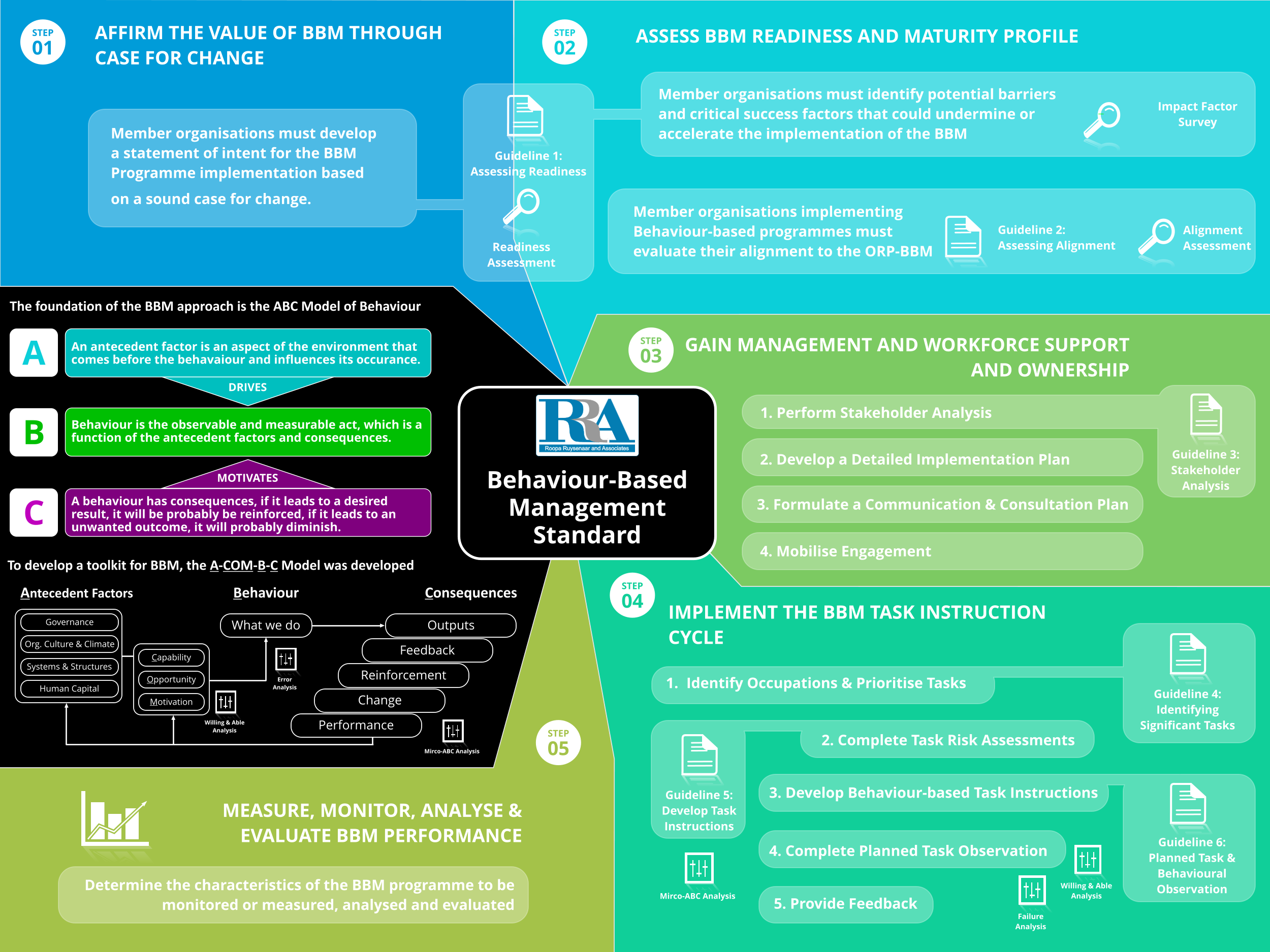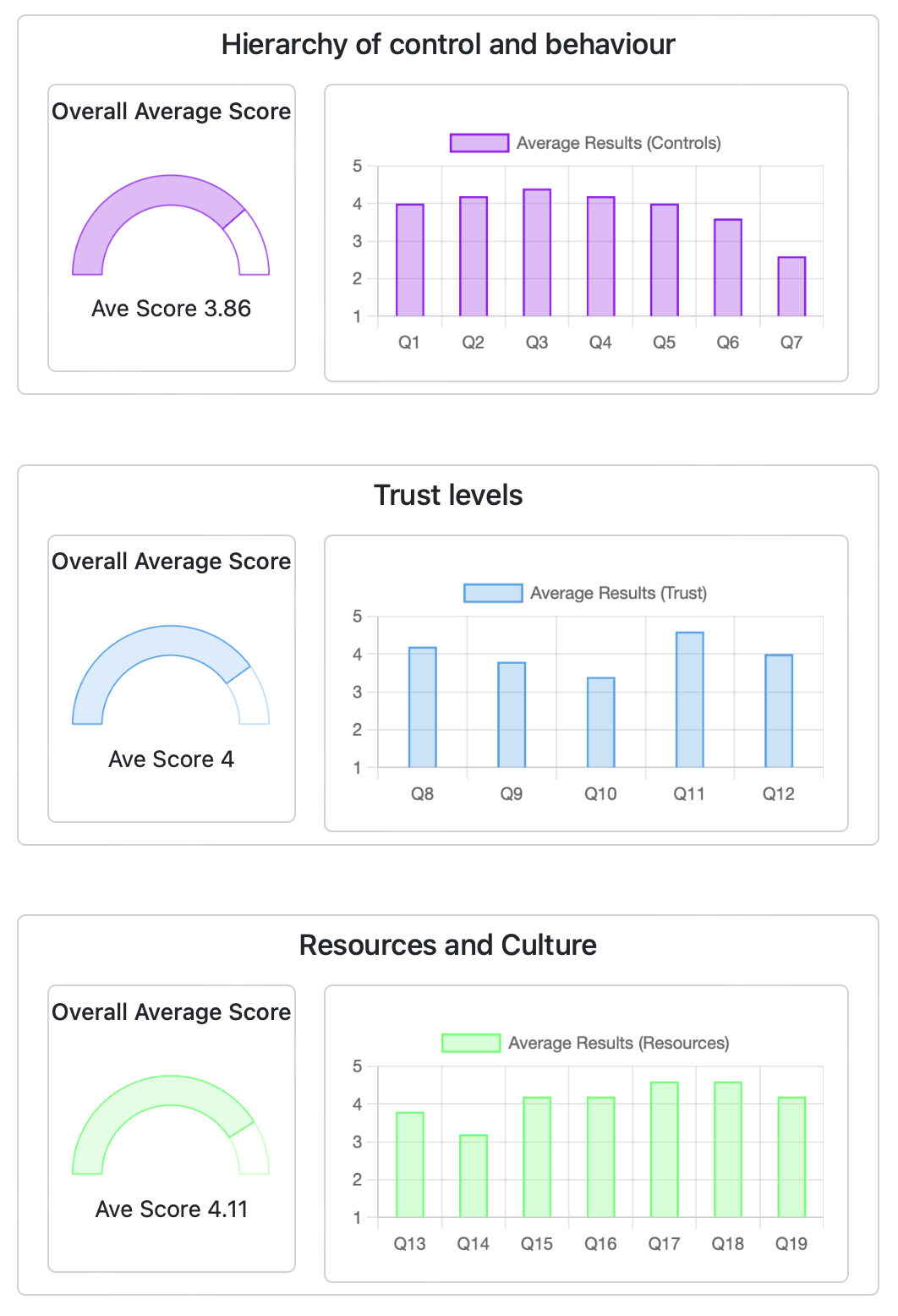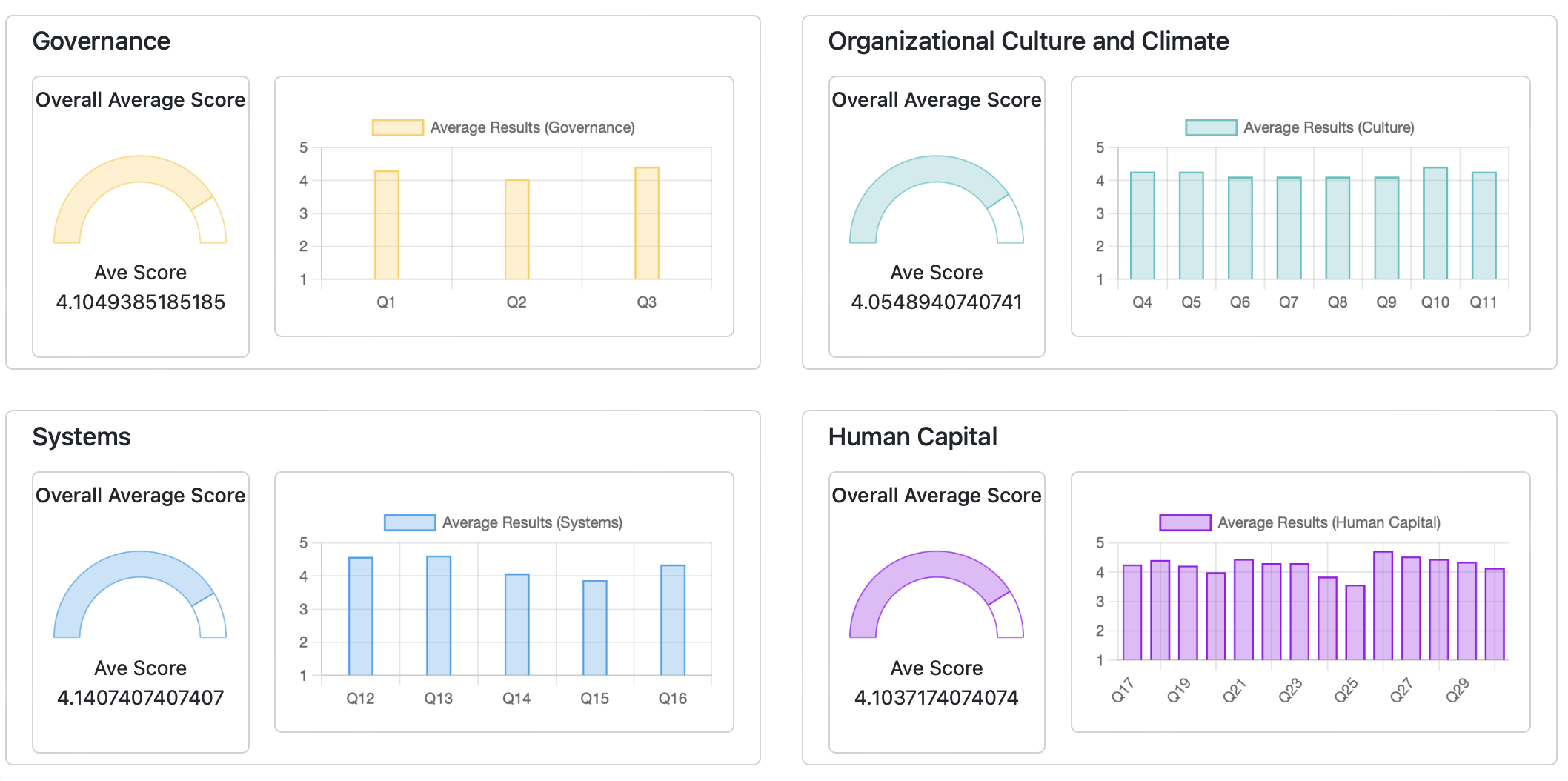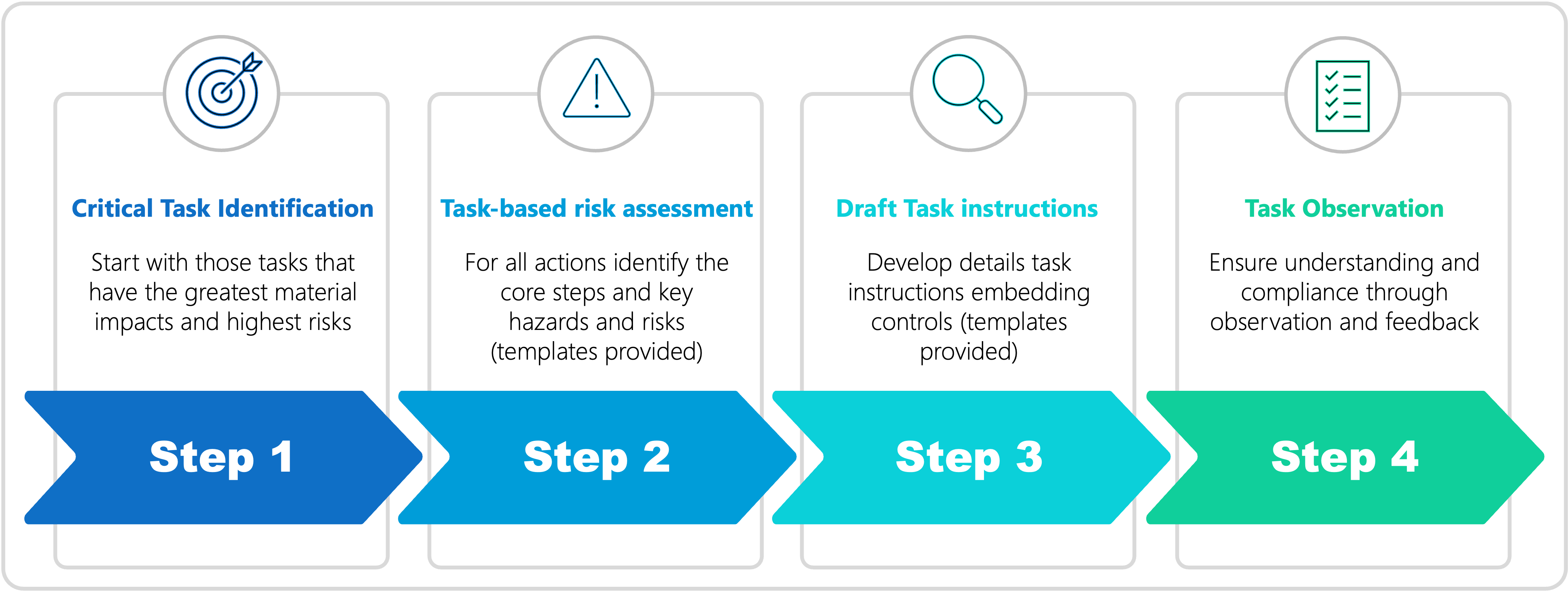Welcome to the BBM Portal

Your ultimate solution for behaviour-based management.
Login Get in touch See MoreAbout the BBM Portal
For the past four years, RRA and its client have been developing and testing the BBM Standard with various member organisations. The underlying principle is to ensure that performance relating to behaviour, including safety and quality issues, are improved using tried-and-tested tools and techniques used in a systematic way.
This portal has been set up to illustrate the various tools and documentation being developed by the Roopa Ruysenaar and Associates (RRA) Team.
This portal provides users access to:
The BBM Standards
Based on the ISO Annexure SL, providing standards and guidance for behaviour-based management.
BBM Assessments
Online versions of the BBM assessments to evaluate performance and compliance.
BBM Task instructions
Embedding risk mitigation and behavioural requirements into tasks and processes.
Behaviour-Based Management Tools
A range of tools designed to improve safety, efficiency, and performance.
Key Aspects of the Model
The Behaviour-Based Management (BBM) is a structured approach to improving performance within the organisation.
The BBM "infographic" provides an overview of the full model and its key implementation stages.
The model has been developed to have both explanatory and exploratory value. In total, it provides a guideline to implement BBM. Its assessments allow organisations to identify where they may need to focus attention or build on strengths. The tools can be used alone, in combination, or as supplements to existing systems and frameworks to ensure behavioural aspects are taken into account.
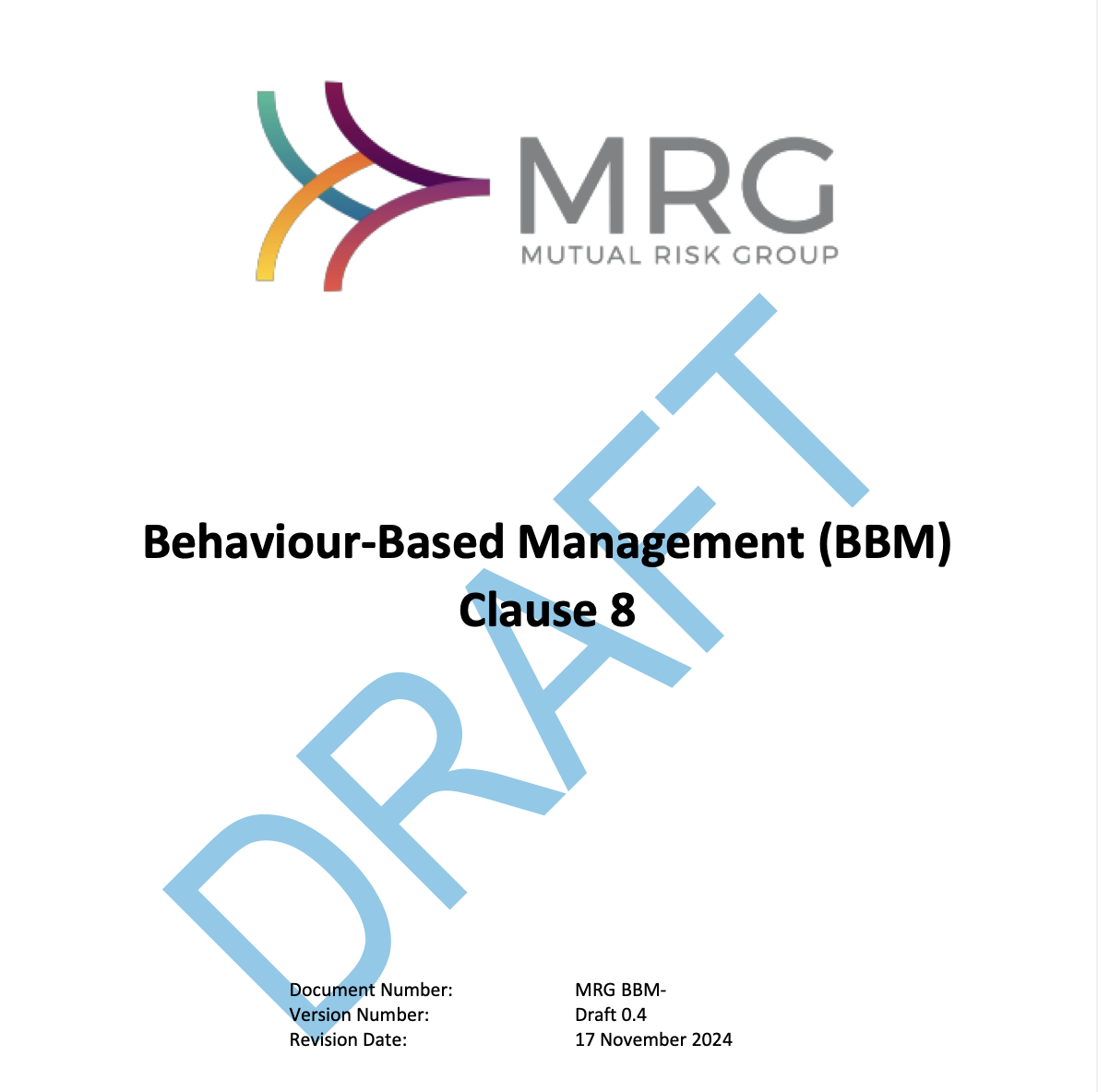
The BBM Standard and Guidance Documents
Behaviour-based models have, over the years, focused on two main components which often get blended together, namely Behaviour-based Quality and Behaviour-based Safety. Although they sometimes are used as synonyms, there are distinct differences as one can have shoddy and faulty workmanship (low quality) without any safety incidents. In the same way you can have a quality end-product but safety was compromised in the process and risky behaviours occurred.
In the long run though, quality behaviours and safety behaviours need to happen simultaneously and continuously for an organisation and its products and services to be viable and meet all standards and specifications. For this reason, it was considered important to develop a robust Behaviour-based model that provides for an understanding of why people behave the way they do and providing tools to guide behaviour change from non-conformance to full performance.
The BBM Standard and its associated guidance documents provide an overview of the model and prescribe the activities required to implement a BBM.
BBM Assessments
The portal provides access a range of online assessments designed to evaluate and improve behavior-based management practices. All the assessments have associated charts and results pages to view responses in real time. The main assessments include:
The Readiness Assessment
The readiness assessment does what it says in the name, it identifies key issues and challenges that may impact on the ability of the organisation to implement a BBM programme.
Impact Factor Surveys (IFS)
The second category of assessments are the Impact Factor Surveys, which are situational assessments identifying important impact factors or "enablers" that may lead to certain behaviours.
The IFS comes in two forms: a standard version and a simplified version. The simplified version includes additional information to help users better understand the questions.
Tool Comparison and Alignment Assessments
The third category of assessments is for organisations that have already implemented some form of behaviour-based programme or to compare their tools and systems with those prescribed by the BBM.
Alignment Assessment: Organisation's implementing behavioursl programmes, usually in the form of Behaviour-based Safety, should complete the BBM Alignment Assessment to see how well their programme aligns with the requirements of the BBM Standard.
Tool Comparison: a simplified version of the Alignment Assessment that any organisation can complete to see if they have the tools needed to be effective in managing behaviour.
Behaviour-based Task Instructions
Core to the BBM approach is a redesign of critical behaviour checklists to develop task instructions that integrate potential hazards, performance standards, behavioural requirements and other controls to ensure personnel know what is expected of them and operate within expected risk levels.
Whilst most organisations have SOPS, work instructions, task instructions or similar documentation, few of them define behaviours at the task level and ensure that specific risks are mitigated and effective controls are put in place in ways that people will actually understand them. The BBM Task Instructions fix this problem.
BBM Tools
The power of the BBM Standard is the range of tools and templates provided. In addition to the Behaviour-based Task Instructions there are a number of additional tools and templates to assist organisations in managing behaviours. A selection of these are described below. Most of these have been developed into online tools within the Portal.
Stakeholder Management
The BBM uses a standard methodology based on influence and interest to identify relevant stakeholders to the successful implementation of a BBM programme and managing them accordingly. Organisations may have in place processes to identify stakeholders but often do not consider how to categorise and manage them. Similar tools may be found in change management toolkits. Included in the BBM portal is a simplified Stakeholder Management toolkit aligned with the prescriptions of the Standard.
Communication Strategies
Some guidance on how to approach general project management and how to communicate the programme effectively.
Mobilising Engagement
Linked to the communication strategies this section of the standard provides tactics to effectively engage stakeholders.
Proactive behaviour change through BBM Task Instructions
The core of the BBM. The BBM Task instructions are a robust risk and behaviour-based appoach to outlining tasks within the workplace. Based on broad risk assessments for all actions, effective controls are built in and personnel gain clarity in the what, why and how. You probably have work instructions already, but they are not like these!
Monitoring and Evaluation
An overall appraoch to determine whether there is some change in the behaviour of people within the organisation but also to evaluate the implementation of the BBM.
Error diagnosis through Human Failure Diagnostics and Root Cause Analysis (Behavioural Perspective)
The two most common approaches to root cause analysis are the 5-Whys and Fishbone analysis. Whilst these are useful, their application tends to ignore behavioural aspects. For this reason the BBM provides an Error Analysis Tool that extends on tradiational Root Cause Analysis but explicitly includes behavioural aspects. Also included is James Reason's Failure diagnosis to identify failure types.
Reactive behaviour change through Micro ABC Analysis
This tool reviews a specific context to identify the "activators" or triggers and the consequences (reinforcement and punishment) that lead to certain behaviours. This is important in identifying contexts can be modified in order to change behaviour.
Reactive behaviour change Capability and Motivation Analysis
This is a decision tree that identifies whether a person is willing or able and potential responses to both. It is a means of identifying underlying reasons for non-performance.
Connect with us
If you are interested in the BBM or a member organisation trying to gain access please get in touch...
